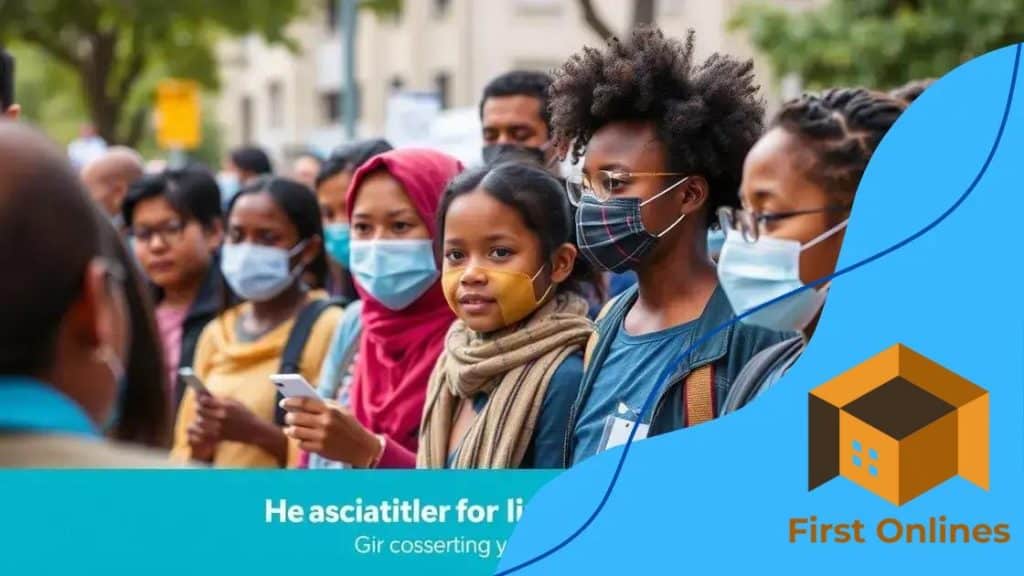The role of public health programs in tackling healthcare disparities

Anúncios
The role of public health programs in tackling healthcare disparities is crucial, as these initiatives improve access to healthcare, promote equity, and address the needs of underserved communities.
The role of public health programs in tackling healthcare disparities is more vital than ever. Have you ever considered how these initiatives shape access to healthcare for marginalized communities? Let’s delve into their significance.
Anúncios
Understanding healthcare disparities
Understanding healthcare disparities is essential for addressing the unequal access to healthcare services that many face. These disparities often stem from various factors such as socioeconomic status, race, and geographic location. Recognizing and addressing these gaps can lead to better health outcomes.
What are healthcare disparities?
Healthcare disparities refer to the differences in access to or availability of facilities and services. A clear example is how some communities struggle with basic healthcare needs due to limited resources. Understanding this concept helps highlight the need for targeted public health interventions.
Key factors contributing to healthcare disparities:
- Income levels: Individuals with lower incomes often lack access to quality healthcare.
- Education: Education can significantly impact health literacy and access to care.
- Geographic location: Rural areas frequently have fewer healthcare facilities compared to urban centers.
- Race and ethnicity: Many minority groups experience worse health outcomes due to systemic biases.
Addressing these factors is critical for improving healthcare access. Solutions can include community health programs that focus on education and outreach, particularly in underserved areas. By bringing awareness to healthcare disparities, we can encourage policy changes that lead to more equitable healthcare systems.
Anúncios
Moreover, advocacy plays a significant role in this conversation. Through collective efforts, communities can push for better healthcare resources and policies that address these disparities. It’s essential to continue raising awareness and foster conversations around this critical issue.
Key public health programs and their impact
Key public health programs play a vital role in improving community health and reducing healthcare disparities. These programs focus on prevention, education, and access to essential services. By targeting high-risk populations, they aim to create lasting change in health outcomes.
Types of public health programs:
There are several types of public health programs that address various health issues. Some of these include:
- Immunization programs: These initiatives provide vaccines to prevent diseases, particularly in children.
- Nutrition and physical activity programs: They educate communities about healthy eating and encourage physical activity.
- Tobacco control initiatives: Aimed at reducing smoking rates through awareness campaigns.
- Mental health programs: Offering support and resources for mental well-being.
Each program has a unique impact on the community. For example, immunization efforts have dramatically reduced the spread of vaccine-preventable diseases. Likewise, nutrition programs help combat obesity and related health issues.
Furthermore, community engagement is crucial for the success of these programs. By involving community members in planning and decision-making, public health initiatives become more relevant and effective. This participatory approach ensures that health interventions align with the specific needs and values of the population served.
Accessibility to healthcare services is another key factor that public health programs aim to improve. They often provide resources to help individuals navigate the healthcare system, ensuring that everyone, regardless of their background, can obtain the care they need.
Success stories in reducing disparities

Success stories in reducing disparities highlight the effectiveness of public health programs. These success stories showcase how targeted initiatives can lead to significant improvements in community health outcomes. In various regions, programs have made a real difference, ensuring that everyone has access to necessary healthcare services.
Examples of successful initiatives:
Many programs have demonstrated positive results. For instance, a vaccination campaign in a low-income area led to an increase in immunization rates among children. This not only protects the children but also strengthens community health.
- Community health worker programs: These programs train local individuals to provide health education, counseling, and support services in their neighborhoods.
- Mobile health clinics: By bringing healthcare directly to underserved areas, these clinics improve access for those who might otherwise go without care.
- School-based health programs: These programs provide health services like screenings and mental health support directly in schools, making it easier for students to receive care.
Additionally, the implementation of health education workshops in various communities has raised awareness about preventive care. As individuals gain knowledge about healthy practices, they are more likely to seek care when needed.
One remarkable case involved a collaborative effort between local health departments and community organizations that resulted in significant decreases in chronic disease rates. By working together, they were able to provide resources and support tailored to the specific needs of the population.
These success stories serve as an inspiration for future public health efforts. They illustrate that with the right strategies and collaboration, substantial improvements can be made in reducing healthcare disparities.
Challenges faced by public health initiatives
Challenges faced by public health initiatives can significantly impact their effectiveness. Despite the best intentions, many programs encounter hurdles that can hinder their success. Understanding these obstacles is crucial for developing strategies to overcome them.
Common obstacles in public health initiatives:
Some of the main challenges include funding limitations, lack of community engagement, and difficulty measuring impact. When budgets are tight, programs might struggle to provide adequate resources, which can lead to insufficient services.
- Funding constraints: Many public health programs rely on grants and government funding, which can fluctuate or be reduced over time.
- Community buy-in: Engaging the community is vital, but not all initiatives gain the trust and participation of local residents.
- Data collection issues: Collecting accurate data is essential for understanding the health needs of a population. However, challenges in data collection can limit the effectiveness of programs.
- Political and policy barriers: Changes in policy or political priorities can affect program implementation and sustainability.
Building strong partnerships with local organizations can help address these challenges. By collaborating with community leaders, public health programs can foster trust and enhance participation. Furthermore, utilizing innovative funding approaches, such as public-private partnerships, can provide additional resources to sustain initiatives.
In addition, developing tools to analyze data efficiently allows programs to adapt and target their efforts better. The ability to measure the impact of initiatives helps demonstrate their value and can attract further funding.
Ultimately, overcoming these challenges requires resilience and creativity. Public health advocates must continue to find solutions that enhance program effectiveness, ensuring that underserved communities receive the support they need.
Future directions for health equity
Future directions for health equity focus on innovative strategies to eliminate disparities. As we look ahead, it is crucial to identify effective methods that can enhance access to healthcare for all communities. This involves a commitment to addressing the root causes of health inequities, such as poverty and discrimination.
Innovative strategies for promoting health equity:
Several key strategies are emerging to foster health equity in communities worldwide. These strategies aim to improve overall health outcomes and ensure that everyone has equal access to healthcare resources.
- Community engagement: Building strong relationships with local organizations can empower communities to take charge of their health.
- Data-driven approaches: Utilizing health data analytics can help identify specific needs and monitor progress in real time.
- Policy advocacy: Advocating for policies that support health equity, such as expanded healthcare coverage and funding for public health programs, is essential.
- Integrative health services: Combining physical, mental, and social health services can provide comprehensive care to the underserved.
Furthermore, technology plays a pivotal role in advancing health equity. Telehealth services make it easier for people in remote areas to access healthcare, while mobile applications can track health data and promote healthy behaviors. This technological integration can help bridge the gap between healthcare providers and vulnerable populations.
Education is another vital aspect in moving toward health equity. By equipping individuals with knowledge about health issues and resources, communities can empower themselves to make informed health decisions. Programs that educate on disease prevention, nutrition, and healthy living contribute to better health outcomes.
Emphasizing collaboration among healthcare providers, policymakers, and community organizations will drive meaningful progress. As stakeholders work together, they can create sustainable solutions that address health disparities effectively.
FAQ – Frequently Asked Questions About Public Health Programs and Health Equity
What are public health programs?
Public health programs are initiatives designed to improve the health of communities and reduce health disparities through education, prevention, and access to healthcare services.
How do public health programs help reduce disparities?
These programs provide targeted resources and support to underserved populations, ensuring they have access to necessary healthcare and education to improve their health outcomes.
What are some successful examples of health equity initiatives?
Examples include community health worker programs, mobile health clinics, and school-based health services that offer accessible healthcare directly to the populations in need.
What challenges do public health initiatives face?
Challenges include funding constraints, lack of community engagement, difficulties in data collection, and political barriers that can limit the effectiveness and sustainability of health programs.





